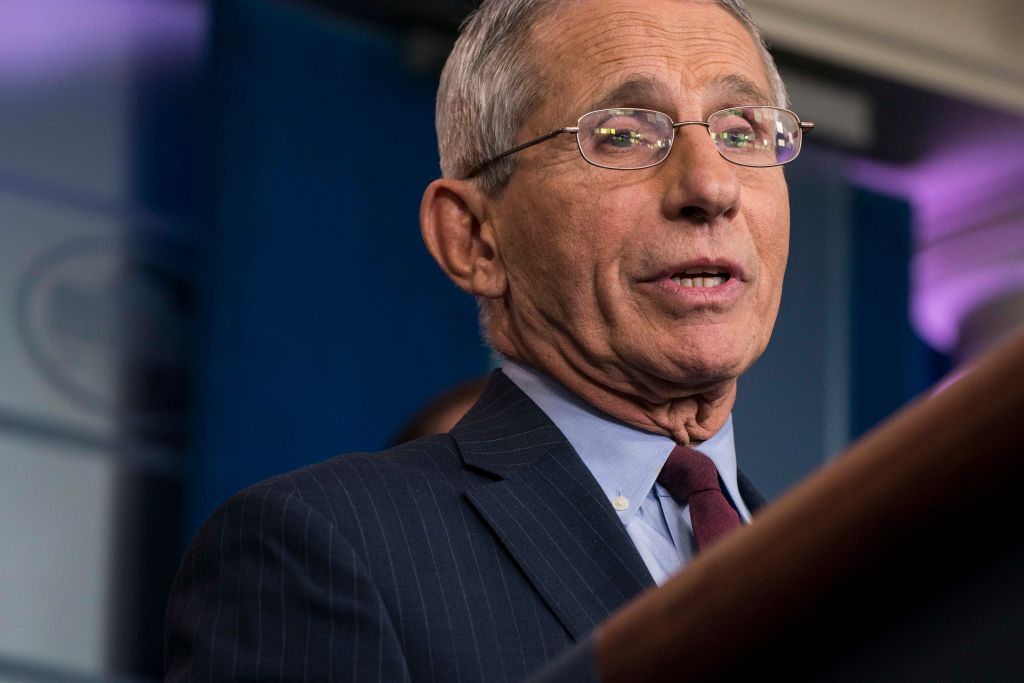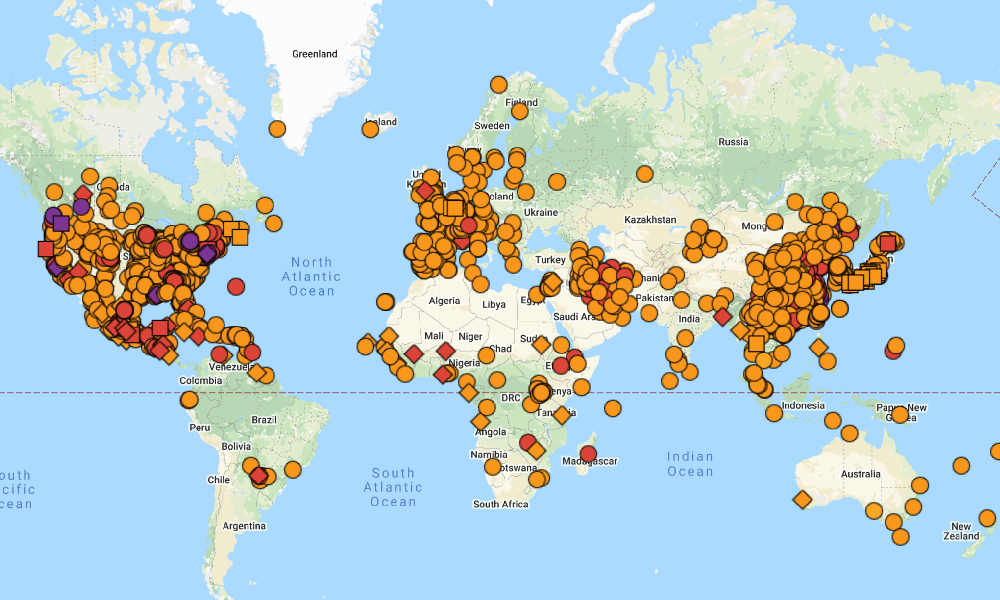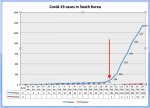ZeroHedge - On a long enough timeline, the survival rate for everyone drops to zero

www.zerohedge.com
This Is Not A Drill: Why Covid-19 Could Be The Deadly Pandemic That Changes Everything
Tue, 02/25/2020 - 16:25
Authored by Cat Ellis via The Organic Prepper blog, author of the The Wuhan Coronavirus Survival Manual
It has been almost three months since the Wuhan coronavirus, now known officially as COVID-19, emerged in Wuhan, China. This novel coronavirus is the latest candidate to be the next major pandemic. We’ve learned a lot about COVID-19 in that time, and unfortunately, there is still so much we don’t know.
One thing that has
becoming impossible to ignore, however, is that this not a drill.

Like all outbreaks, it’s impossible to know for sure if any particular one will become the next deadly, global pandemic until it either happens or doesn’t happen.
Unfortunately, COVID-19 is shaping into what appears to be the one that folks will be reading about in a hundred years in the same way we look back in history at the Spanish flu.
What We Thought We Knew
When the first cluster of 41 patients was identified in early December 2019 in Wuhan, China, early data suggested that the virus was only of real concern to the elderly, infirm, and those with comorbidities, such as diabetes and heart disease.
These would be standard expectations of a viral respiratory illness, similar to the flu. However, further inspection of that cluster only showed about half with serious illness fit that profile, meaning the other half who sought hospital care were younger, presumably healthier adults.
This novel coronavirus also had an early reported case fatality rate of about 2%, as reported by the World Health Organization (WHO). A mortality rate of 2% is concerning, but not all that alarming. It’s a little higher than the typical influenza case fatality rate. But, it wasn’t close to the case fatality rate of Middle East Respiratory Syndrome (MERS), another coronavirus that can be fatal to humans and has a
case fatality rate of 34.4%.
As January progressed, we began seeing a handful of cases trickling into the United States and other countries. The first US case of the novel coronavirus was a young man who had returned from a trip to Wuhan. On January 21, 2020, the New York Times reported that he was a
man in his thirties experiencing mild pneumonia.
More cases popped up from travelers, for business or education, in the US. But, on January 30, 2020, just a little over a week from the first patient to test positive for the Wuhan coronavirus, the Centers for Disease Control (CDC) reported that the United States had it’s
first person-to-person transmission of the novel coronavirus.
Cause for Concern Grows
What was not known from the beginning was the rate of transmission and what percentage of people who become infected will become seriously or critically ill.
Worldometers breaks down the number of total active cases into mild and serious/critical categories. As of February 24, 2020, about 82% have a mild illness, and about 18% have a serious/critical illness requiring hospitalization. This is up from a rate of approximately 13% serious/critical cases just a few weeks ago.
Could this mean that the virus is mutating to become more dangerous? Possibly. But it could also just mean that as more data is collected, this additional data gives us a clearer picture of the real case fatality rate. Remember that the
data we’ve received from China all along has been questionable. As the virus spreads to countries with more transparency, what we thought we knew is bound to change.
The same source cites the rate of transmission at between 2 to 3, meaning if there were a room with 10 people, and a person infected with this virus entered the room, you could reasonably expect 2 to 3 people to also become infected. For perspective, that is also 2 to 3 times as contagious as the flu.
The Worldometers coronavirus tracker, which is in line with several other coronavirus trackers from
Johns Hopkins,
BNO News, and
Visa List, also lists the results of closed cases, i.e. cases with an actual outcome. Of the known outcomes, 91% recovered and 9% were fatal. What this means is that out of all the confirmed COVID-19 cases, about 18% will lead to serious or critical illness requiring hospital-level care and that 9% of that subset will die.
What about that 2% mortality rate? Part of the problem with calculating a case fatality rate is that you can’t actually know the true mortality rate (case fatality rate) until the outbreak is completely over. Until then, there are still cases without an outcome. In COVID-10, there are thousands more cases without outcomes yet.
The case fatality rate of 9% comes from taking the total cases of fatalities (2,701) and dividing it by the total number of cases with outcomes (30,334), then multiplying by 100 to get a case fatality rate of almost 9%.
What does all this mean?
If this virus comes to your neighborhood, you most likely would have a mild respiratory illness. However, if you are one of the unfortunate people who become seriously or critically ill, there’s a 9% chance of becoming the next victim of COVID-19.
COVID-19 has continued to spread. According to
Worldometers on February 24, 2020, the United States currently has 53 cases of COVID-19, with 6 recoveries. Most of the cases in the United States are people who became infected elsewhere, traveled here asymptomatic, and developed symptoms here. Though, keep in mind there have been some person-to-person cases here as well.
There are now more than
600 people in Washington state being supervised for COVID-19. The number had once been up to almost 800 but, has been reduced when no symptoms were observed after 14 days. And it isn’t just in Washington state –
thousands of people across the country are in self-quarantine right now because they may have been exposed.
What Is The Real Danger from COVID-19?
Now that we are a few months out from the first known cases, we know COVID-19 is highly contagious, and it can cause about 18% of people infected to require hospital-level care.
We simply will not have the beds or the medical staff to care for everyone, even if every hospital bed in the country were to be dedicated to Wuhan coronavirus patients. Even if we forgot about all the other sick people, those having babies, and those who were injured, there still would not be enough beds just for those with coronavirus.
In
The Wuhan Coronavirus Survival Manual, I touched on the hospital overload.
The latest data I could find for how many hospital beds are available in the United States is for 2018 from the American Hospital Association. They put the total number of hospital beds in 2018 at 924,107. This is similar to the data from Stastisca.com, and it confirms that there was still a downward trend in the number of available hospital beds in 2018.
Assuming the downward trend has continued since 2018, we have less than 924 thousand available beds for every sick person from all causes in the United States. We are facing the potential worst-case scenario of 2,697,300 hospitalizations for Wuhan coronavirus alone.
This would raise the death toll from all causes as hospitals reach surge capacity. Surge capacity occurs when there is a sudden influx of patients that a hospital becomes overwhelmed and cannot treat any additional sick people.
In this situation, there are no more beds, and there is not enough hospital staff to treat any more patients.
Often, during a pandemic, it is not the pandemic illness itself that will kill a person. During the 2014 Ebola pandemic, it was common for people to die of some other health problem, and not Ebola, simply because doctors and nurses were too afraid to come to work. In other places, health care workers also became sick and unable to care for patients, as they were now patients themselves.
Imagine going into labor in the middle of a pandemic crisis. While homebirth attended by a skilled midwife has consistently proven to be safe and have better outcomes than hospital births, things can and still do go wrong. What if that were to happen during a pandemic with no beds available? What if you or a loved one experienced a heart attack or stroke? What if you were in a car accident or injured in a mob trying to get the last supplies off a grocery store shelf and needed emergency room care? (
source)
If this virus continues to spread, it would be reasonable to expect massive disruptions to modern life, manufacturing, shipping, and shortages of all kinds. The number of fatalities from other illnesses, accidents, and lack of services would be in addition to the fatalities from the coronavirus itself. If you are preparing for this, remember that you aren’t just preparing for a cushy 2-week staycation. You’re preparing for something that affects many other facets of your life.
The entire system will be at risk in the event of a massive outbreak and
shortages of all sorts could soon follow.
Is COVID-19 the Next Pandemic?
From the moment the Wuhan coronavirus appeared in mainstream US media, the message has largely been a call for calm, downplaying any risk to our nation. However, government actions and those of worldwide organizations tell a different story.
- The United States declared a state of emergency, limiting flights coming from Wuhan.
- The World Health Organization declared a public health emergency of international concern, or PHEIC, on January 20, 2020.The Director of the World Health Organization, Tedros Ghebreyesus, stated in a press conference and in a tweet the day following the press conference (February 9, 2020), something truly ominous.
The detection of a small number of cases may indicate more widespread transmission in other countries; in short we may only be seeing the tip of the iceberg.
- The CDC held a press briefing with Dr. Nancy Messonier, where she stated the Centers for Disease Control is preparing as if COVID-19 will be the next great pandemic:
As I look around me at the staff working on this outbreak here at CDC, I see a lot of people who worked on the 2009 h1n1 pandemic. Rather than coming from abroad, that virus was on our doorstep when we recognized it. We didn’t have much chance to prepare. Today we are again seeing the emergence of the new virus that poses a very serious public health threat. This time we do have time to prepare, and we are preparing as if this were the next pandemic.
- The Organic Prepper reported on how hospitals in the US, as well as the United States military, are preparing for COVID-19 to spread across the country.
Experts from the Minnesota Department of Health and Minnesota University both warn families to prepare for a COVID-19 outbreak.
But Minnesota Department of Health infectious disease director Kris Ehresmann said it’s very likely there will be outbreaks of the virus here. And Michael Osterholm, an expert in infectious disease at the University of Minnesota, said people should assume the virus will hit hard.
The article continues, covering the likelihood of hospitals reaching capacity, the need for plans to keep power and utilities running during an outbreak, for families to have communication plans, discuss who would take care of sick family members (assuming they wouldn’t require hospital-level care), and to have extra food on hand.
Just to make sure that you know you have some basic resources, in terms of foodstuffs and things like that,” she said. “So that if you would have family members get sick and you were unable to go out for a few days, do you have enough basic supplies to kind of keep going?
The official warning signs are everywhere if you are paying attention.
Mandatory Quarantines
What comes with pandemics? Mandatory quarantines. We saw them in the Ebola outbreak of 2014, and we’re seeing them now in China. According to the
New York Times:
Residential lockdowns of varying strictness — from checkpoints at building entrances to hard limits on going outdoors — now cover at least 760 million people in China, or more than half the country’s population, according to a New York Times analysis of government announcements in provinces and major cities. Many of these people live far from the city of Wuhan, where the virus was first reported and which the government sealed off last month.
This article discusses many of the dystopian measures used in China to quarantine people.
Think that could never happen here?
The CDC is already considering these extreme measures.
Today officials from the Centers for Disease Control and Prevention (CDC) warned that although the agency is taking historic measures to slow the introduction of COVID-19 into the United States, the country should prepare for the possibility of community spread, as seen in China and neighboring Asian countries.
“The day may come when we may need to implement such measures as seen in Asia,” Nancy Messonnier, MD, director of the CDC’s National Center for Immunization and Respiratory Diseases, said in a press conference, referencing the closing of businesses, schools, and churches in multiple countries where transmission is now occurring within the community.
Don’t kid yourself. If things start spreading here as it has in other countries, the government will crack down so fast it will make your head spin. If things lead to the place that all the signs are pointing to, you’d be wise to
get prepared for the possibility of being quarantined due to a pandemic. As well, remember that there are
deep financial ramifications to people being unable to go about their daily business.
Prepping for a Covid-19 Pandemic
I spent the weekend adding to the comfort and capabilities of my secondary location, and this week I’m putting up extra food. You may wish to do the same. Here’s a list of resources for those who want to prepare for the possibility of a pandemic, quarantines, and lockdowns.
Don’t expect a lengthy warning with time to run to the store if a mandatory quarantine occurs. You will be spending that quarantine with the things you already have on hand, so now is the time to prepare for that possibility.
This Is Not A Drill
While containment still remains the mainstay of WHO and CDC policy, if we pay attention to what our government, military, and world health agencies are telling us, they are preparing for a full-on coronavirus pandemic.
We have authorities in infectious disease telling us to have food and plans in place in the event you suddenly find yourself under travel restrictions or in a full-blown, lock-down quarantine. I’m not sure what else there is to say except this is
not a drill.
I hope that containment will still save the day. Perhaps we will do better in the United States than some others will, and not see COVID-19 spread any further, unlike
Italy with large clusters forming seemingly overnight, leading to school and work closings in multiple cities.
While I always hope for the best, I also always plan for the worst. You won’t get much time to prepare if things begin spreading rapidly where you are. You’d be wise to do so ahead of time.
* * *






 ) my add on stopped working. I found a free program that's been working great. It's a few extra steps, it lives in my toolbar (win7) and is really easy to use.
) my add on stopped working. I found a free program that's been working great. It's a few extra steps, it lives in my toolbar (win7) and is really easy to use.






